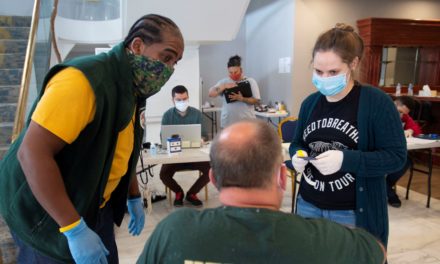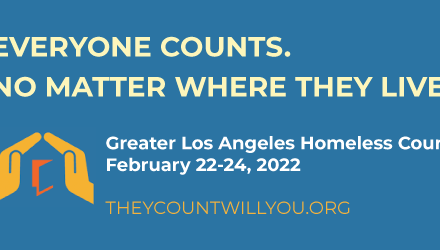by H. Chung So, Public Information Officer
 Adalberto “Bobby” Higareda, Jr., is a community health worker with LACDMH’s Homeless Outreach and Mobile Engagement (HOME) Program. In this Q&A, you will learn more about his work, why he joined the HOME team, and insights from his experience working with individuals experiencing homelessness and serious mental illness.
Adalberto “Bobby” Higareda, Jr., is a community health worker with LACDMH’s Homeless Outreach and Mobile Engagement (HOME) Program. In this Q&A, you will learn more about his work, why he joined the HOME team, and insights from his experience working with individuals experiencing homelessness and serious mental illness.
How long have you been with LACDMH and the HOME Program?
I have been with this Department and the HOME Team for about three years, and this was my first job with L.A. County.
What led you to pursue this role with the HOME team?
Prior to joining HOME, I have worked in a similar capacity providing services to people from diverse backgrounds and cultures. Most recently, this was at Children’s Hospital Los Angeles, where I worked at the Division of Adolescent and Young Adult Medicine. There I was helping youths, including those experiencing or at risk of homelessness, get connected to services and educating them about resources and benefits they are eligible for. And that’s the type of work I do now but just with a different and broader group of people who also need help and support.
What is your day-to-day work like?
It’s very interesting because you might have something planned but might wound up doing something totally different because of how quickly client needs and situations change.
In the past, we have done more outreach efforts and gone out into the community to find new clients. This could involve teaming up with a meal distribution service, visiting shelters, or just a quick friendly conversation so they feel welcomed and included.
Currently, we are more focused on monitoring and helping the existing clients we have been assigned, constantly checking in with them, and providing the needed services and supplies to support their health. When they are stabilized enough, we will coordinate a warm handoff to other programs or agencies that will also help the client and continue our check-ins to make sure they are comfortable with the transition.
When engaging new clients, what is that initial process like?
It depends, but many people experiencing homelessness and mental illness have “blended in” to their surroundings, disengaging from interactions and not wanting to be bothered. In those instances, we will try to establish a routine, saying “hello” and “how are you?” during our daily check-ins while bringing them some food, water, clothing, or hygiene supplies. If they don’t want to respond, we will leave at that and try again tomorrow and work on building that rapport so they feel safe engaging in a dialogue.
We will then work on having longer conversations and educating them about various resources available while being respectful of their boundaries. Ultimately, we will work toward a point where the client will trust us and agree to accept services and ideally get housing and stay housed.
What happens after you connect these clients with housing and services?
Getting them placed in housing and connected to services is not the end of the story. We are also there afterward to make sure they stay housed and keep up with their appointments, medications, and so forth. Some clients might not be aware of house rules, chores, structured routines, or other habits of daily living and we may have to educate and remind them of that. This can range from making sure they remember the PIN on their EBT card, ensuring they check that appliances are turned off before leaving the house, or being mindful of their neighbors and not be too loud. There is a lot of behind-the-scenes training involved after placement, and we make sure that happens so the client stays healthy and housed.
Can you highlight a recent success story from your job?
For me, every day is a success story so it’s hard to talk about just one. But I will share that recently, there was a client who had mental health and substance use issues who had been defying treatment and services. He was disturbing the community so he was referred to us, where we then persistently and strategically engaged him in a friendly, approachable manner. Eventually, we were able to talk to him about building structure in his life and getting services. He did that and eventually did get a housing placement. While he still has a considerable way to go in his recovery journey, the last time we met he expressed his thanks and tried to hug me. Since we are still in COVID-19 I offered to elbow bump instead, which we did. And that, to me, was the utter meaning of success.
What advice do you have for the general public when they encounter people affected by homelessness?
I would say be curious and be mindful. People experiencing homelessness come from all walks of life and we don’t know their backstories, their traumas, what they have been going through, and what triggers them. Check your initial reactions, and when possible respond with help and empathy, including asking for support from us and other agencies.




